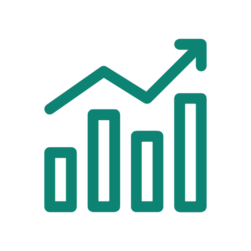|
Evaluation and Evidence Training Series
Open to federal executive branch employees only. Register on MAX.gov.
Evaluation 101
July 8 - 9-10:30 AM ET
This workshop serves as an introduction to evaluation and how it can help agencies better understand their programs, policies, and operations.
Why Randomize? A Case Study
August 3 - 3-4:30 PM ET
This interactive session, presented by the Abdul Latif Jameel Poverty Action Lab - North America, will walk participants through a real‐life case.
|
Who receives access to small business relief?
New results detail the impact of different allocation methods on underserved populations: Who receives access to small business relief? A simulation-based approach.
We find that methods that set aside a portion of awards for underserved groups (e.g., weighted lotteries; first-come first-serve with separate waitlists) reliably increase award rates, while points systems that prioritize economically-needier businesses can inadvertently increase disparities.
And a recently posted analysis plan details planned analysis for forthcoming work: Dallas Small Business Continuity Fund Impact Evaluation.
|
|
Join OES!

We are excited to announce that we are currently accepting applications for the OES Methods Team Lead. The application deadline is July 25, 2021. View solicitation and apply here.
OES follows the best practices in social science research and is a leader in transparency and accountability. OES is recruiting for the OES Methods Lead role to serve in a full time capacity between September 2021 - March 2022. If mutually agreeable, the role could be extended further.
The Methods Lead oversees the rigor and quality of the OES evaluation portfolio, supporting over twenty simultaneous impact evaluations. The Methods Lead directly coordinates and oversees the work of the OES Methods Team, a small team of experts in the design and statistical analysis of randomized and quasi-experimental evaluations.
Send any questions to oes@gsa.gov.
|
|
|
Using behavioral insights to improve customer experience with government

Designing experiences that enable individuals to access federal services intuitively is part of what the broader Federal customer experience movement is hoping to achieve. OES projects demonstrate that applying insights from the social and behavioral sciences can measurably improve the experience of interacting with government.
In 2017, for example, OES and the Defense Health Agency designed an improved approach to inform patients about a secure messaging service and make it easier for them to enroll. The approach had three components: providers made a personal appeal about registration during patient visits, on-site staff assisted patients with signup, and staff gave a checkout sheet to patients with registration instructions to complete later. Read more.
|
|
|
|
|